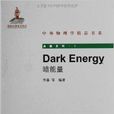《中外物理學精品書系·高瞻系列:暗能量》是關於暗能量的英文專著,詳細地介紹了暗能量領域的理論基礎、研究方法和發展水平,內容包含理論推演和實驗觀測數據分析。《中外物理學精品書系·高瞻系列:暗能量》從引力理論和宇宙學背景知識講起,引入並探討了暗能量的各種模型及相關理論,如超對稱、全息原理、人擇原理、量子宇宙學、修正的引力理論、反饋和各種唯象模型等等。在系統講解理論推演的同時,《中外物理學精品書系·高瞻系列:暗能量》對於實驗觀測的結果也作了全面介紹,並且較為詳細地講解了數據分析的方法。通過實驗提供的數據,《中外物理學精品書系·高瞻系列:暗能量》對各種暗能量模型與實驗的比對作了介紹。進一步地,還對各個模型的優劣做了比較。
基本介紹
- 書名:中外物理學精品書系•高瞻系列:暗能量
- 作者:李淼 等
- 出版日期:2012年8月1日
- 語種:簡體中文, 英語
- ISBN:7301210388, 9787301210383
- 外文名:Dark Energy
- 出版社:北京大學出版社
- 頁數:267頁
- 開本:16
- 品牌:北京大學出版社
基本介紹,內容簡介,作者簡介,圖書目錄,
基本介紹
內容簡介
《中外物理學精品書系·高瞻系列:暗能量》力圖完整呈現近現代世界和中國物理科學發展的全貌,是一部目前國內為數不多的兼具學術價值和閱讀樂趣的經典物理叢書。《中外物理學精品書系·高瞻系列:暗能量》在把西方物理的精華要義“請進來”的同時,也將我國近現代物理的優秀成果“送出去”。《中外物理學精品書系·高瞻系列:暗能量》首次將一些中國物理學者的優秀論著以英文版的形式直接推向國際相關研究的主流領域,使世界對中國物理學的過去和現狀有更多的深入了解,不僅充分展示出中國物理學研究和積累的“硬實力”,也向世界主動傳播我國科技文化領域不斷創新的“軟實力”,對全面提升中國科學、教育和文化領域的國際形象起到重要的促進作用。《中外物理學精品書系·高瞻系列:暗能量》還對中國近現代物理學科的經典著作進行了全面收錄。
作者簡介
李淼,1990年于丹麥哥本哈根大學玻爾研究所獲博士學位,研究量子場論、超弦理論以及宇宙學。先後在美國加州大學聖巴巴拉分校、布朗大學以及芝加哥大學做博士後研究員和研究助理教授。1999年回國,是中國科學院引進傑出人才入選者、國家基金委傑出青年基金獲得者、新世紀百千萬人工程入選者,曾任台灣大學客座教授。現為中國科學院理論物理研究所研究員、中國科學院交叉學科理論研究中心成員、中國科學技術大學客座教授。在超弦理論中的研究有一定的國際影響,特別是二維劉維爾理論、D膜以及黑洞的量子物理。最近致力於研究超弦中的黑洞物理、超弦宇宙學以及暗能量。
圖書目錄
Part Ⅰ Preliminaries in a Nutshell
1 Gravitation
1.1 The Curved Spacetime
1.2 The Curved Spacetime:an Example
1.3 The Einstein Equation
2 Matter Components
2.1 The Stress Tensor
2.2 Perfect Fluid
2.3 Observers and Energy Conditions
2.4 The Vacuum
2.5 Particles
2.6 Homogeneous Field Configurations
3 Cosmology
3.1 The Cosmological Principle
3.2 Newtonian Cosmology
3.3 FRW Cosmology
Part Ⅱ Theoretical Aspects
4 Introduction to Dark Energy
4.1 The Cosmological Constant Reloaded
4.2 The Theoretical Challenge References
5 Weinberg's Classification
5.1 Supersymmetry
5.2 Anthropic Principle
5.3 Tuning Mechanism
5.4 Modifying Gravity
5.5 Quantum Cosmology
References
6 Symmetry
6.1 Supersymmetry in 2{1 Dimensions
6.2 't Hooft—Nobhenhuis Symmetry
6.3 Kaplan Sundrum Symmetry
6.4 Symmetry of Reversing Sign of the Metric
6.5 Sealing Invariance in D > 4
References
7 Anthropic Principle
7.1 Bousso—Polchinski Scenario
7.2 KKLT Scenario
7.3 Populating the Landscape and Anthropic Interpretations
References
8 Tuning Mechanisms
8.1 Brane versus Bulk Mechanism
8.2 Black Hole Self—Adjustment
References
9 Modified Gravity
9.1 f(R) Models
9.2 MOND and TeVeS Theories
9.3 DGP Model
9.4 Other Modified Gravity Theories
References
10 Quantum Cosmology
10.1 Cosmological Constant Seesaw
10.2 Wave Function through the Landscape
References
11 Holographic Principle
11.1 The Holographic Principle
11.2 Holographic Dark Energy
11.3 Complementary Motivations
11.4 Agegraphic Dark Energy
11.5 Ricci Dark Energy
References
12 Back—Reaction
12.1 Sub—Hubble Inhomogeneities
12.2 Super—Hubble Inhomogeneities
References
13 Phenomenological Models
13.1 Quintessence, Phantom and Quintom
13.2 K—Essense, Custuton, Braiding and Ghost Condensation
13.3 Higher Spin Fields
13.4 Chaplygin Gas and Viscous Fluid
13.5 Particle Physics Models
13.6 Dark Energy Perturbations
References
14 The Theoretical Challenge Revisited
References
Part Ⅲ Observational Aspects
15 Basis of Statistics
15.1 X2 Analysis
15.2 Algorithms for the Best—Fit Analysis
15.3 The Markov Chain Monte Carlo Algorithm
15.4 The Fisher Matrix Techniques
References
16 Cosmic Probes of Dark Energy
16.1 Type Ia Supernovae
16.2 Cosmic Microwave Background
16.3 Baryon Acoustic Oscillations
16.4 Weak Lensing
16.5 Galaxy Clusters
16.6 Gamma—Ray Burst
16.7 X—Ray Observations
16.8 Hubble Parameter Measurements
16.9 Cosmic Age Tests
16.10 Growth Factor
16.11 Other Cosmological Probes
References
17 Dark Energy Projects
17.1 On—Going Projects
17.2 Intermediate—Scale, Near—Future Projects
17.3 Larger—Scale, Longer—Term Future Projects
References
18 Observational Constraints on Specific Theoretical Models
18.1 Scalar Field Models
18.2 Chaplygin Gas Models
18.3 Holographic Dark Energy Models
18.4 Dvali—Gabadadze—Porrati Model
18.5 f(R) Models
18.6 Other Modified Gravity Models
18.7 Inhomogeneous LTB and Back—Reartion Models
18.8 Comparison of Dark Energy Models
References
19 Dark Energy Reconstructions from Observational Data
19.1 Specific Ansatz
19.2 Binned Parametrization
19.3 Polynomial Fitting
19.4 Gaussian Process Modeling
References
Index
1 Gravitation
1.1 The Curved Spacetime
1.2 The Curved Spacetime:an Example
1.3 The Einstein Equation
2 Matter Components
2.1 The Stress Tensor
2.2 Perfect Fluid
2.3 Observers and Energy Conditions
2.4 The Vacuum
2.5 Particles
2.6 Homogeneous Field Configurations
3 Cosmology
3.1 The Cosmological Principle
3.2 Newtonian Cosmology
3.3 FRW Cosmology
Part Ⅱ Theoretical Aspects
4 Introduction to Dark Energy
4.1 The Cosmological Constant Reloaded
4.2 The Theoretical Challenge References
5 Weinberg's Classification
5.1 Supersymmetry
5.2 Anthropic Principle
5.3 Tuning Mechanism
5.4 Modifying Gravity
5.5 Quantum Cosmology
References
6 Symmetry
6.1 Supersymmetry in 2{1 Dimensions
6.2 't Hooft—Nobhenhuis Symmetry
6.3 Kaplan Sundrum Symmetry
6.4 Symmetry of Reversing Sign of the Metric
6.5 Sealing Invariance in D > 4
References
7 Anthropic Principle
7.1 Bousso—Polchinski Scenario
7.2 KKLT Scenario
7.3 Populating the Landscape and Anthropic Interpretations
References
8 Tuning Mechanisms
8.1 Brane versus Bulk Mechanism
8.2 Black Hole Self—Adjustment
References
9 Modified Gravity
9.1 f(R) Models
9.2 MOND and TeVeS Theories
9.3 DGP Model
9.4 Other Modified Gravity Theories
References
10 Quantum Cosmology
10.1 Cosmological Constant Seesaw
10.2 Wave Function through the Landscape
References
11 Holographic Principle
11.1 The Holographic Principle
11.2 Holographic Dark Energy
11.3 Complementary Motivations
11.4 Agegraphic Dark Energy
11.5 Ricci Dark Energy
References
12 Back—Reaction
12.1 Sub—Hubble Inhomogeneities
12.2 Super—Hubble Inhomogeneities
References
13 Phenomenological Models
13.1 Quintessence, Phantom and Quintom
13.2 K—Essense, Custuton, Braiding and Ghost Condensation
13.3 Higher Spin Fields
13.4 Chaplygin Gas and Viscous Fluid
13.5 Particle Physics Models
13.6 Dark Energy Perturbations
References
14 The Theoretical Challenge Revisited
References
Part Ⅲ Observational Aspects
15 Basis of Statistics
15.1 X2 Analysis
15.2 Algorithms for the Best—Fit Analysis
15.3 The Markov Chain Monte Carlo Algorithm
15.4 The Fisher Matrix Techniques
References
16 Cosmic Probes of Dark Energy
16.1 Type Ia Supernovae
16.2 Cosmic Microwave Background
16.3 Baryon Acoustic Oscillations
16.4 Weak Lensing
16.5 Galaxy Clusters
16.6 Gamma—Ray Burst
16.7 X—Ray Observations
16.8 Hubble Parameter Measurements
16.9 Cosmic Age Tests
16.10 Growth Factor
16.11 Other Cosmological Probes
References
17 Dark Energy Projects
17.1 On—Going Projects
17.2 Intermediate—Scale, Near—Future Projects
17.3 Larger—Scale, Longer—Term Future Projects
References
18 Observational Constraints on Specific Theoretical Models
18.1 Scalar Field Models
18.2 Chaplygin Gas Models
18.3 Holographic Dark Energy Models
18.4 Dvali—Gabadadze—Porrati Model
18.5 f(R) Models
18.6 Other Modified Gravity Models
18.7 Inhomogeneous LTB and Back—Reartion Models
18.8 Comparison of Dark Energy Models
References
19 Dark Energy Reconstructions from Observational Data
19.1 Specific Ansatz
19.2 Binned Parametrization
19.3 Polynomial Fitting
19.4 Gaussian Process Modeling
References
Index

